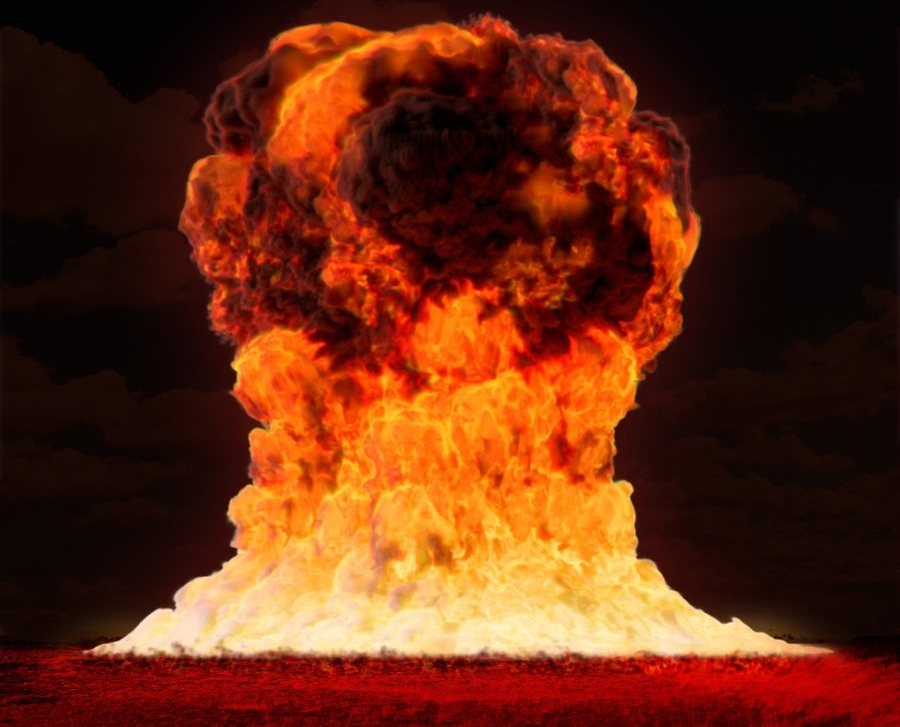The Doomsday Clock: Can it Help the World Disarm?
Ten years ago I gave the annual Sunderland P. Gardner lecture at Canadian Yearly Meeting on the theme Toward a Culture of Peace: Can we afford to pay the price? It was a time, like today, when the human race faced a combination of threats to our very existence. The Cold War ended long ago, yet half the world’s population still lives under governments with nuclear weapons, many on hair trigger alert. More than $12 trillion has been spent on these instruments of mass murder. And Canada’s policies are shamefully contradictory. On the one hand, Canada says it favours efforts to reduce nuclear weapons. On the other, it supports the nine nuclear weapon policies of the North Atlantic Treaty Organization (NATO). Those policies include the most heinous of them all: that nuclear weapons can be used on the population of another country first. Further, they must be maintained indefinitely, and can be used on non-nuclear weapon states.
Why? NATO tells us nuclear weapons are “the supreme guarantee of our security”.1 Yet the underlying policy is one of Mutual Assured Destruction (MAD), described by former General Lee Butler, Commander of all US Nuclear Forces as “the single most absurd and irresponsible document” he had ever seen.2
The United Nations General Assembly has approved an historic resolution to launch negotiations in 2017 on a treaty prohibiting nuclear weapons. The resolution was adopted by a large majority, with 113 UN member states voting in favour, 35 voting against and 13 abstaining. Support was strongest among the nations of Africa, Latin America, the Caribbean, Southeast Asia, and the Pacific. A cross-regional group comprising Austria, Brazil, Ireland, Mexico, Nigeria, and South Africa initiated the resolution and are likely to lead next year’s negotiations. Sadly, Canada boycotted and did not take part in the discussions, siding with the Nuclear Weapon States led by the US and Russia.
Friends should find ways to remind the Canadian Government about the Non-Proliferation Treaty of 1968-70. It calls for all states “to pursue negotiations in good faith on effective measures relating to the cessation of the nuclear arms race at an early date, and to nuclear disarmament under strict and effective international control.”
Disarmament is not a cause that attracts and involves a great many people. Yet without disarmament today, the world is living on borrowed time. And without disarmament, the nine nuclear weapon states will likely increase in number. There is pressure in Japan, South Korea, Saudi Arabia, and Iran to join the nuclear club.
Once nuclear weapons are created, they’re difficult to safely dispose of. The estimated number of nuclear warheads built worldwide since 1945 is over 128,000. Many of them use separated plutonium, which has a half-life of 24,000 years.
In 1947 a group of scientists envisioned a new role for a simple household device used every morning to arouse us from our nightly slumbers, an alarm clock. The Doomsday Clock was created as a symbol showing a countdown to possible global catastrophe. The opinion on how close the world is to a global catastrophe is expressed as a number of “minutes” before midnight. Its most recent move earlier this year – to two and a half minutes to midnight – has alarmed citizens in many countries. The Doomsday Clock has been used by everyday citizens, more than 7,000 mayors, and hundreds of the world’s religious and parliamentary leaders.
If we could finally cast-off the nuclear nightmare in which we live today, we could then embrace and build the United Nations with the resources now wasted on deadly weapons of mass destruction. Its Charter has given us the direction for moving forward. “We the peoples of the United Nations,” it states, are “determined to save succeeding generations from the scourge of war…and to practice tolerance and live together in peace with one another as good neighbours.” Its 17 Sustainable Development Goals, set for the next 14 years, provide specific areas and targets for addressing global issues including poverty and hunger, health, quality education, and gender equality. None of the 17 goals will be accomplished easily, but they will not be accomplished at all if the nuclear arms race is allowed to continue.
The Doomsday Clock reminds us that the fateful choice must be made. Are we prepared to make it?
Murray Thomson is a member of Ottawa Monthly Meeting and former Secretary of CFSC. Murray’s concern for a nuclear-free world has led him to co-found groups including Canadians for a Nuclear Weapons Convention and Project Ploughshares. In 2016 CFSC supported the publishing of Murray’s book Minutes to Midnight. The book shares insights and an urgent plea from some of a list of more than 900 members of the Order of Canada who’ve called for nuclear disarmament.
- North Atlantic Treaty Organization (NATO). (2010, November 19). Active Engagement, Modern Defence, Strategic Concept for the Defence and Security of The Members of the North Atlantic Treaty Organization. http://www.nato.int/cps/en/natohq/official_texts_68580.htm ↵
- Quoted in Schlosse, Eric. (2016, December 23). World War Three, by Mistake. The New Yorker. http://www.newyorker.com/news/news-desk/world-war-three-by-mistake. ↵
